
The Pictures collection at State Library Victoria contains many gems such as a posters collection of over six thousand items, including 237 posters from Melbourne’s Pram Factory.
A history of Melbourne’s cultural heritage from the last sixty years would not be complete without mention of the Pram Factory theatre venue (1970-1981) and the Australian Performing Group (APG). The APG was part of a radical theatre and performance grouping that also included La Mama Theatre. They exploded in Carlton in the late 1960s and early 1970s and helped revolutionise live performance, Australian theatre writing, production and acting. This was a diverse and dynamic grouping that also provided the grounding for the development of both the Nindethana Theatre, Australia’s first Aboriginal theatre company established in 1971, and Circus Oz in 1977.

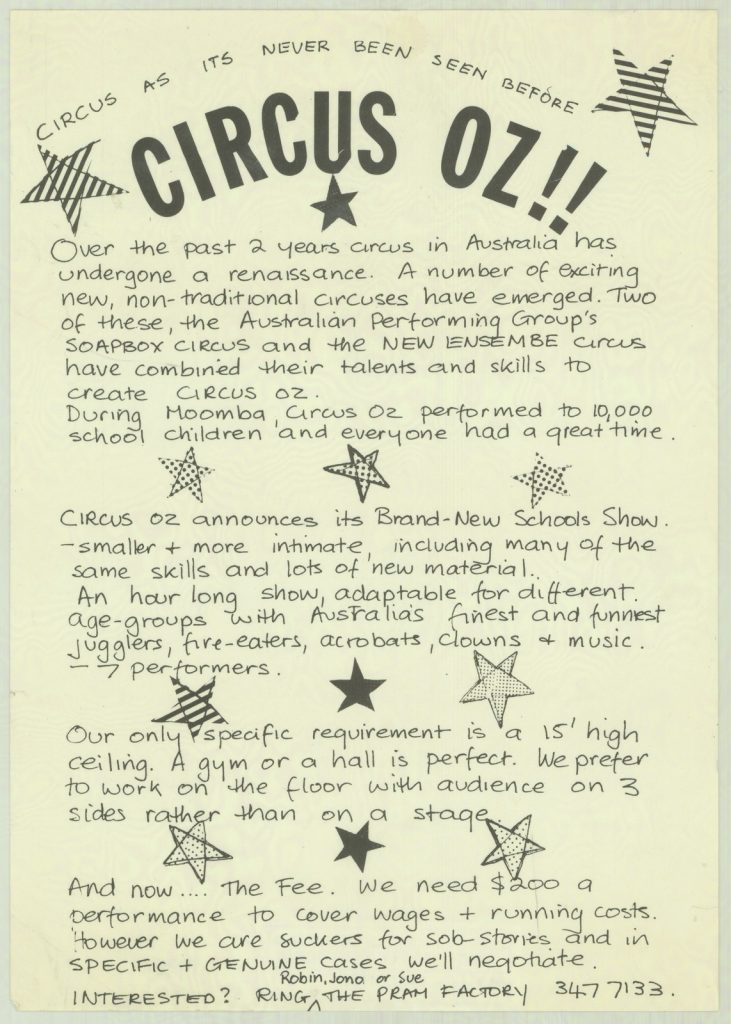
In the late 1960s the APG had started touring schools and factories, developing its street theatre, and performing at La Mama. However, it had no permanent venue until it discovered the Carlton-located Pram Factory, a disused factory building, which it first rented in October 1970.
The Pram factory closed in 1981. Its legacy, however, continued to evolve through the vision, energy, productivity, and influence of many of the original APG members, such as Max Gillies, Greg Pickhaver, Sue Ingleton, Bill Garner, Barry Dickens and John Romeril. As Bill Garner has commented when discussing La Mama and the Pram Factory in 2017:
The Pram, as Gabrielle Wolf makes clear, belongs to a singular historical moment. While La Mama continues to be transforming, the APG was momentarily—but dramatically—transformative. 1
The Pram Factory and the APG have already been covered in an earlier blog at the State Library but the volume of posters that have now been digitized was only mentioned briefly. Most of these were collected shortly after the Pram Factory closed and a search now for ‘Pram Factory’ in the State Library catalogue will bring up over 300 poster images (including many of multiple copies) as well as photos and some recent publications such as Make it Australian: the Australian Performing Group, the Pram Factory and New Wave Theatre by Gabrielle Wolf. The archives of the APG were also acquired and can be found in the manuscripts collection at MS 11436.
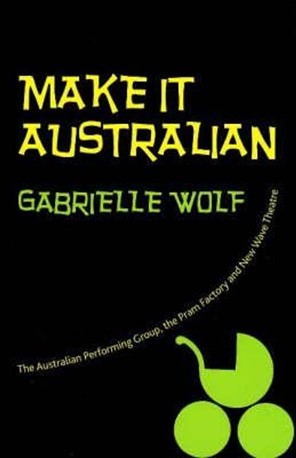
Book cover, Make it Australian : the Australian Performing Group, the Pram Factory and New Wave Theatre by Gabrielle Wolf
The first production at the APG’s new venue was a take on a play written and performed almost 100 years earlier, Alfred Dampiers’s Marvellous Melbourne, originally produced in 1889. The APG had taken note of the burst of Australian-oriented historical melodramas that had occurred prior to federation in 1901, and the original play was both a celebration of Melbourne as well as a send up of its ‘self-importance’ as noted in Make it Australian 2. The APG production certainly mined the original but they also clearly and radically repurposed elements of the play to reflect on Melbourne in 1970.
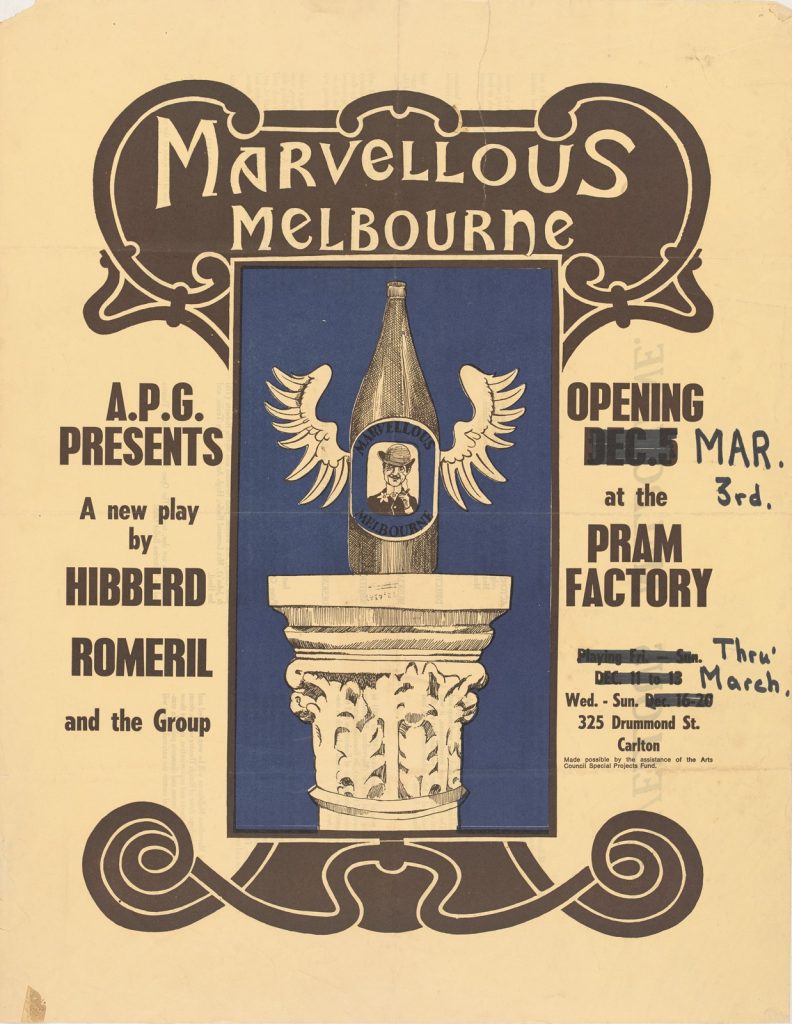
The focus on Melbourne and local issues is again reflected in Mickey’s Moomba, a play by John Romeril, that was one of many protests against the decision to have a foreign character, symbolizing the United States, as a mascot for the Moomba festival. Moomba is a quintessential local Melbourne event that has always focused on local personalities and symbols and the response can be seen in this protest poster below:
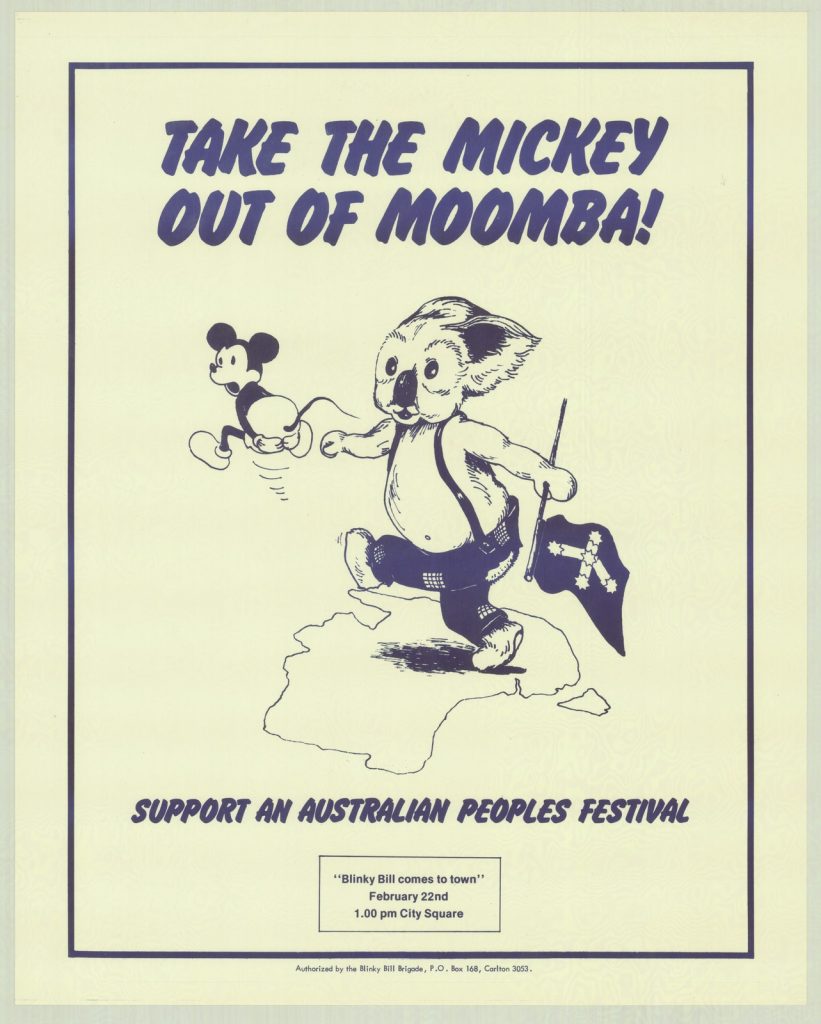
This is not a Pram Factory poster but it advertises Blinky Bill in the City Square, 22 February [1978]. The poster is part of the protest movement against having Mickey Mouse as the mascot for Moomba, a Melbourne festival.
Over ten years at the Pram, the APG produced a range of plays that explored theatre styles, social issues and politics in plays broaching, for example, aspects of Australian racism in The floating world,1974, and feminism in Betty can jump, 1972. The production and success of Betty can jump also led to the emergence of the Women’s Theatre Group (WTG)3

Another example towards the end of the Pram Factory run of productions in 1981, Ned Kelly’s sister’s travelling circus, 1980, continues the revision and reinterpretation of Australian mythology and history and again takes a feminist view of an iconic Victorian character — was Ned a bully? This exploration was characteristic of the diverse approaches taken to what were important social issues that had been marginalized or ignored by history.
While all the performances pushed the boundaries of production, social awareness and history, some were also popular and were re-staged outside the Pram Factory. A good example is A toast to Melba, 1976, by Jack Hibberd, that traveled to the Adelaide Festival of Arts the same year.
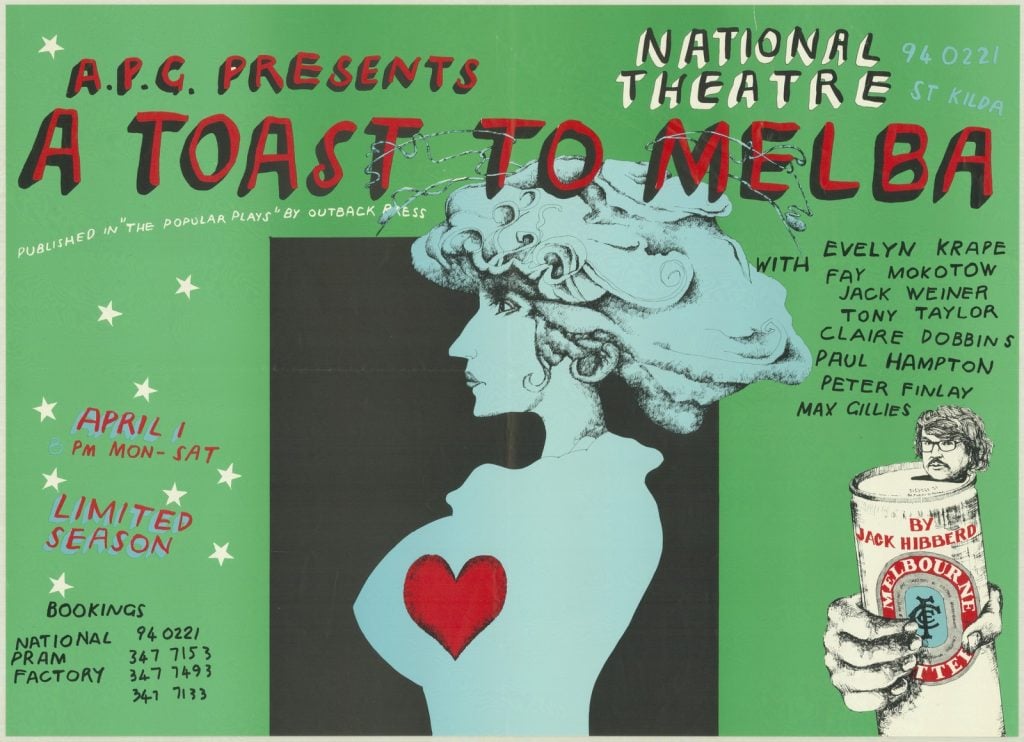
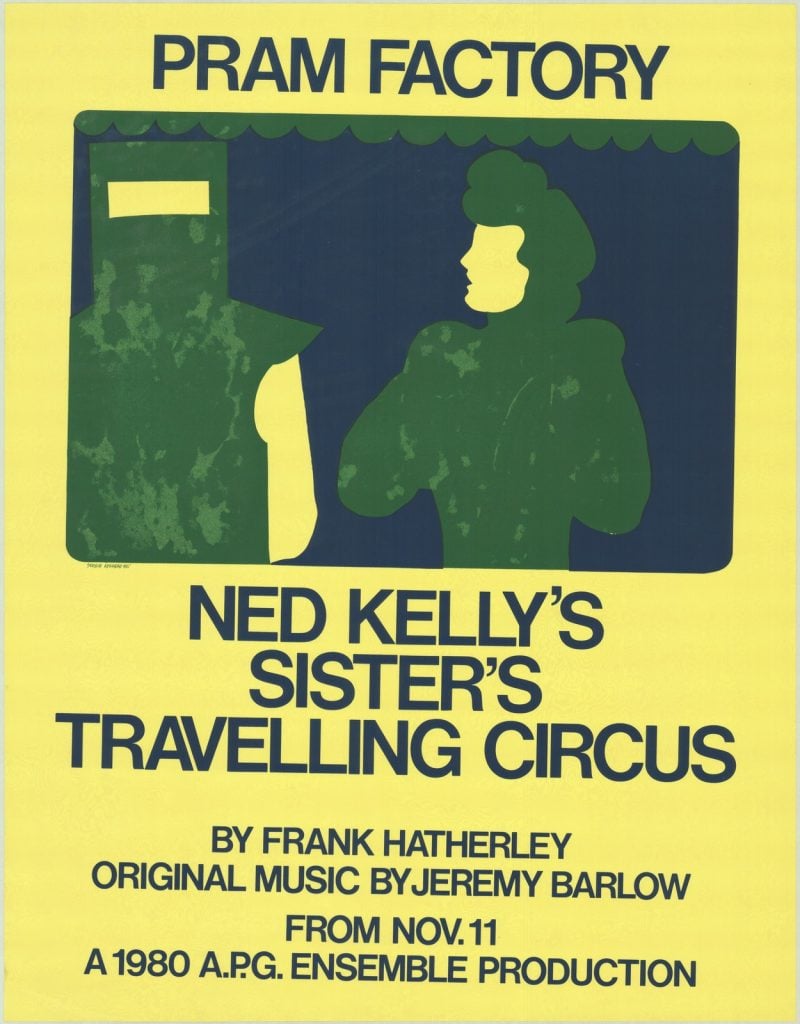
Ned Kelly’s Sister’s Travelling Circus, Pram Factory, 1980; PCPOSTER 70
We have barely scratched the surface of the performances put on at the Pram Factory but we should not forget that experimental international theatre was also produced with, for example, Samuel Beckett’s Endgame and Ionesco’s The lesson double bill produced in 1981. During the early to mid 1970s there were quite a number of international plays produced, and the discussions concerning Australian theatre continued with many avenues for development, including puppetry and musicals elements, highlighting that the Circus Oz development by the APG was not an isolated moment.

Back to Bourke Street, Pram Factory,1977; H82.20/296
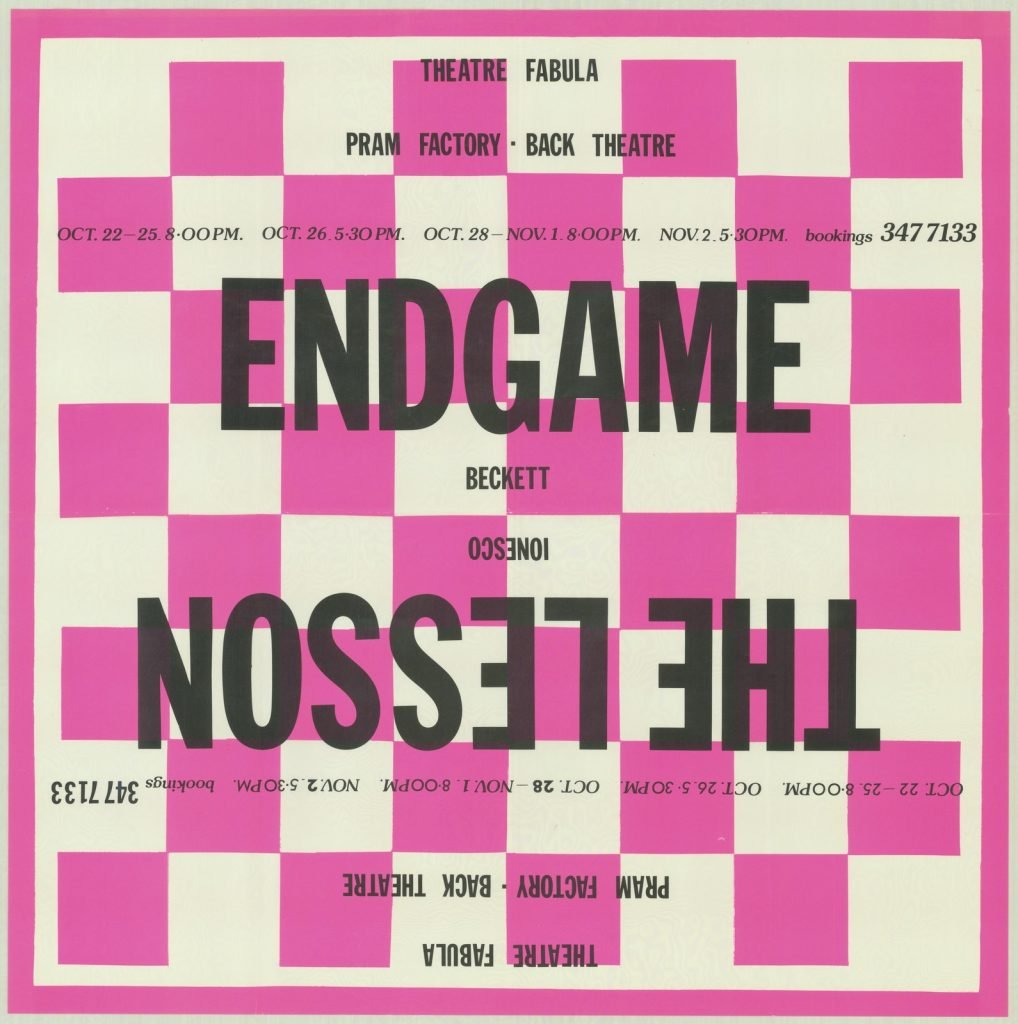
The lesson; Endgame, Pram Factory,1981; H82.20/416

The architect & the emperor of Assyria, Pram Factory, 1974; H82.20/125
We’ll finish this brief overview with a final poster that provides photos of some of the APG members of the mid 1970s. Why are we not surprised that this poster resembles a collection of police photos? Performance is all!
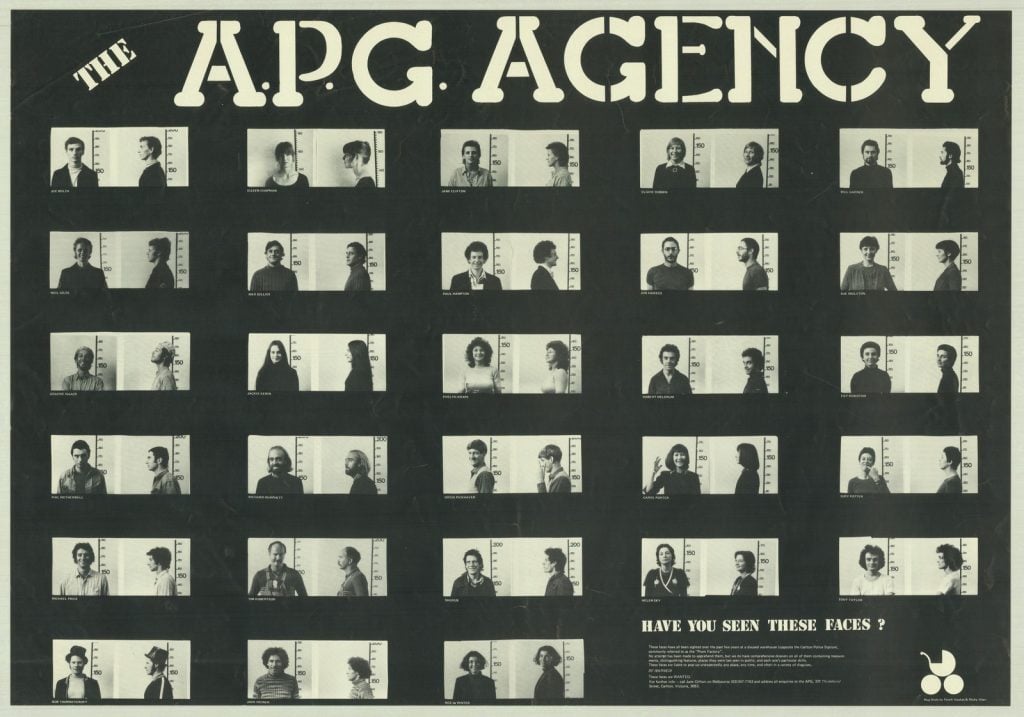
The APG Agency [Members of the Australian Performing Group] [1975]; H82.20/103
In memory of Kerri Hall, colleague and theatre lover.
- Garner, B, 2017, ‘History and Myth’, Arena, no151, December, p 44
- Wolf, Gabrielle, 2008, Make it Australian : the Australian Performing Group, the Pram Factory and New Wave Theatre, Currency Press, Sydney, p 76
- Wolf, Gabrielle, 2008, Make it Australian : the Australian Performing Group, the Pram Factory and New Wave Theatre, Currency Press, Sydney, p.147

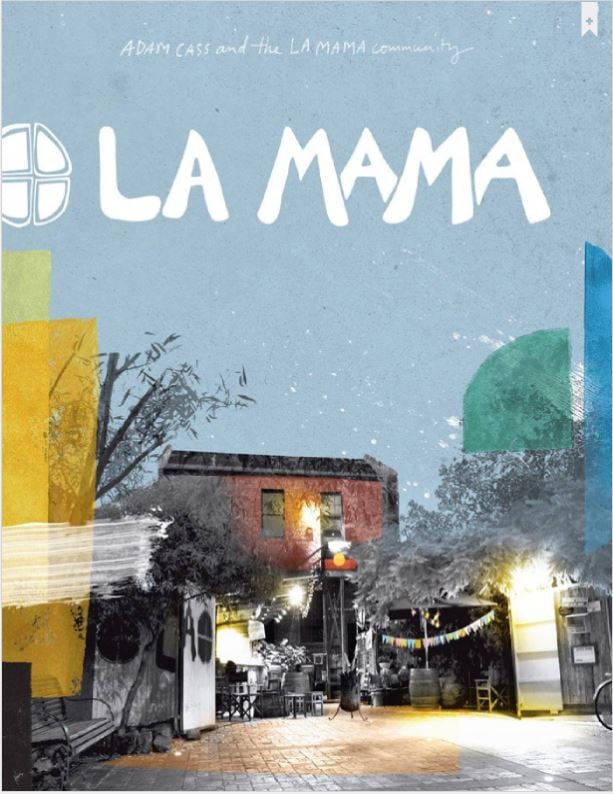

Steven,
I draw your attention to a Pram Factory poster in NLA Canberra, (which I had collected).
Hand painted (limited edition?) by artist Micky Allen,
for a production “Mary Shelley and the Monsters”.
C 1973?
Unfortunately no image on website.
John HINDS